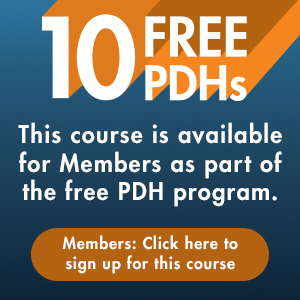
View Important Policies and System Requirements for this course.
This webinar was co-sponsored by ASCE's Environmental & Water Resources Institute (EWRI) and ASCE Continuing Education
Instructor:
Robert Pitt, Ph.D., P.E., D.WRE, BCEE
Brandon Steets, P.E., M.ASCE
Q/A Panel–Members of Pathogens in Wet Weather Flows Technical Committee:
Shirley Clark, P.E., Ph.D., Pennsylvania State University, Committee Vice-chairperson
Cristiane Surbeck, P.E., Ph.D., University of Mississippi, report contributor
Course Length: 1.5 Hours
Purpose and Background
The single most frequent cause of water quality impairment in the U.S. is elevated fecal indicator bacteria (FIB). FIB-related impairments can have significant and costly implications for local governments, businesses, and watershed stakeholders due to beach closures and total maximum daily load (TMDL) compliance and implementation requirements to address these impairments, in addition to the potential public health impacts associated with elevated FIB. TMDLs and associated municipal separate storm sewer system (MS4) NPDES permit requirements for FIB load reductions pose unique challenges relative to TMDLs for chemical constituents. This webinar will focus on the physical realities, source identification, and difficulties inherent when addressing stormwater microorganism management. This webinar will also include some basic statistical information highlighting concepts of variability. Monitoring and source tracking will also be briefly reviewed, both as a management tool when addressing regulations and to reduce discharges of these contaminants. This webinar is the second in a series of four webinars based on 2014 EWRI publication Pathogens in Urban Stormwater Systems, specifically covering Chapters 3 and 5 of the final report.
Primary Discussion Topics
- General sources of bacteria in urban environments
- Source ID tools (simple to advanced)
- Using source ID to direct/prioritize controls
- Regulatory implications of source ID
- Link to QMRA/site specific standards
Learning Outcomes
Upon completion of this course, you will be able to:
- Recognize the range of sources of pathogens in the urban environment, including human, animal and secondary environmental sources
- Obtain a general working knowledge of monitoring and source tracking approaches that can be applied in urban watersheds
- References for more in-depth information
Webinar Benefits
- Understand how human and non-human sources of FIB can lead to FIB impairments
- Find out about the latest source tracking techniques useful for identifying sources of FIB
Assessment of Learning Outcomes
Students' achievement of the learning outcomes will be assessed via a short post-assessment (true-false, multiple choice and fill in the blank questions).
Intended Audience
- Public Works managers and staff
- Attorneys
- Regulators
- Consultants
- Scientists
Webinar Outline
- Sources of pathogens in the urban environment (Chapter 3)
- Sanitary sources
- Wet weather discharges to storm sewer systems (non-sanitary)
- Dry weather discharges to storm sewer systems
- Urban wildlife and domestic animal sources
- Environmental and natural background sources of FIB
- Approaches for monitoring, source tracking, and evaluating FIB and pathogen data, including a discussion of challenges associated with these activities (Chapter 5)
- Basic monitoring issues for stormwater microorganisms
- Source area toolbox to identify origins of stormwater microorganisms
- Conventional culture-based analytical methods
- Emerging molecular -based analytical methods
How to Earn your CEUs/PDHs and Receive Your Certificate of Completion
To receive your certificate of completion, you will need to complete a short on-line post-test and receive a passing score of 70% or higher within 1 year of purchasing the course.
How do I convert CEUs to PDHs?
1.0 CEU = 10 PDHs [Example: 0.1 CEU = 1 PDH]
